Vegetable Pathrode (Colocasia Rolls)
A traditional dish from India, Vegetable Pathrode is a delicious and nutritious recipe made with colocasia leaves and a filling of mixed vegetables and spices.
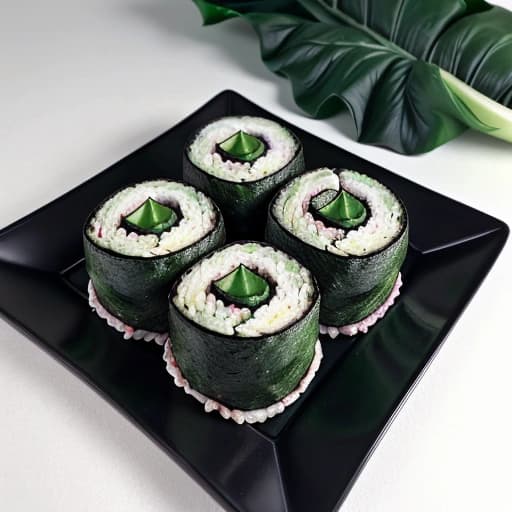
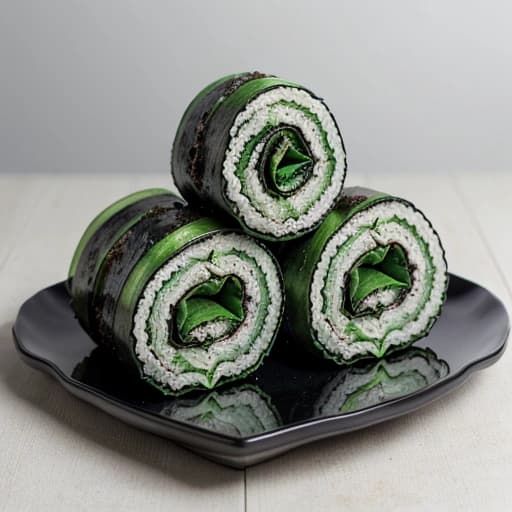
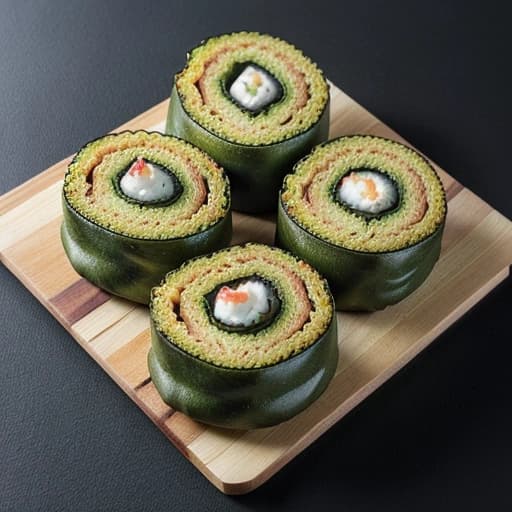
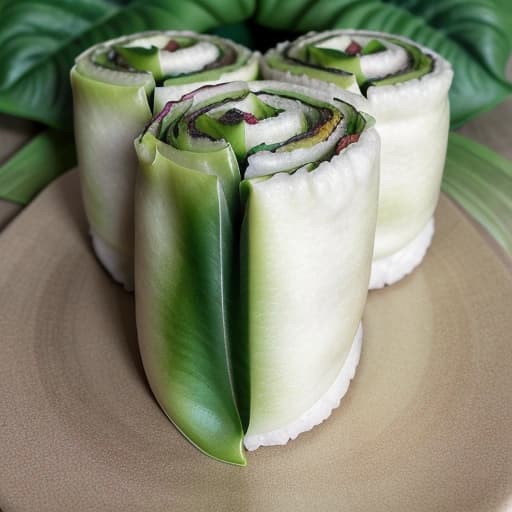
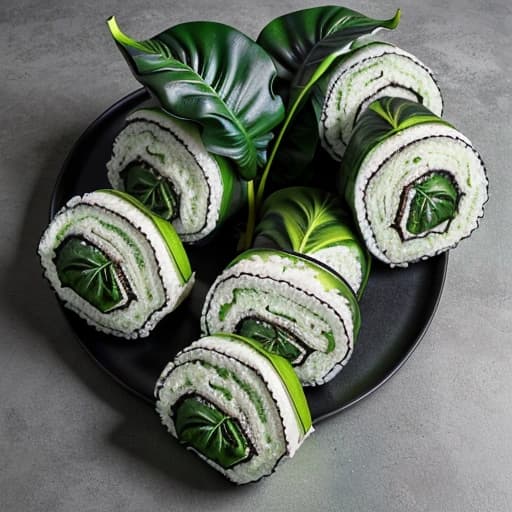
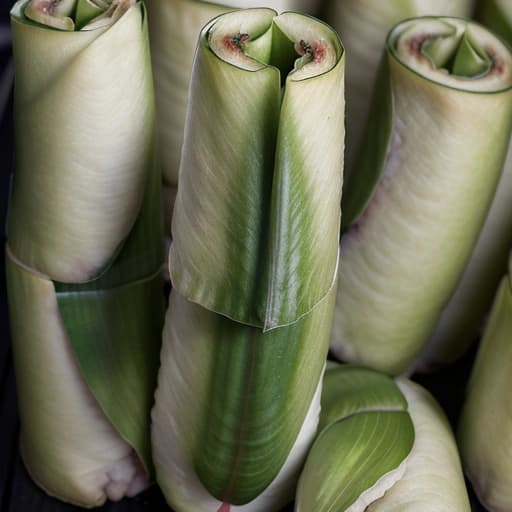
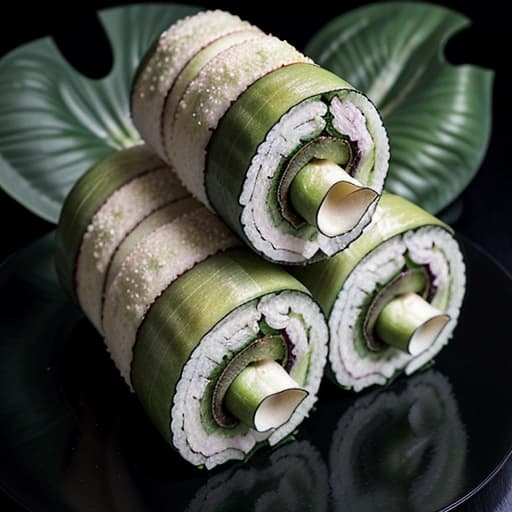
4.4 / 5 (608)
Ingredients
For the filling
- carrots
1 cup
- peas
1 cup
- onions
1 medium
- ginger
a small piece
For the dough
- colocasia leaves
10 leaves
- gram flour
1 cup
- rice flour
0.5 cup
- salt
a pinch
Instructions
- 1
Prepare the filling by sautéing the onions, ginger, carrots, and peas in a little oil until they are tender.
Heat a little oil in a pan and sauté the onions until they are translucent. Add the ginger, carrots, and peas, and continue to cook until they are tender. This should take about 10 minutes.
- 2
Make the dough by mixing the gram flour, rice flour, and salt with a little water to form a smooth paste.
In a large bowl, combine the gram flour, rice flour, and salt. Gradually add a little water to the bowl and mix until a smooth paste is formed. The dough should be soft and pliable.
- 3
Assemble the rolls by applying a little dough to the center of a colocasia leaf and placing a spoonful of the filling in the center.
Take a colocasia leaf and apply a little dough to the center of the leaf. Place a spoonful of the filling in the center of the dough. Fold the leaf over the filling to form a roll and press the edges together to seal the roll. Repeat this process until all the leaves and filling are used up.
- 4
Steam the rolls for 20-25 minutes until they are cooked through.
Place the rolls in a steamer basket and steam them for 20-25 minutes until they are cooked through. The rolls should be tender and the dough should be cooked.
Ratings & Reviews
User Ratings
5
371
4
144
3
47
2
38
1
8
Reviews
 NalaniJ
NalaniJAs I unwrapped the delicate rolls of Vegetable Pathrode, I was immediately enveloped in the aromatic whispers of a far-off land. The tender colocasia leaves, like nature's own parchment, cradled a vibrant filling of carrots, peas, and ginger. I was drawn to the harmony of textures and flavors, reminiscent of the wild rice and succotash dishes that warm my heart. The gram flour and rice flour dough, soft and pliable as a summer breeze, provided a gentle contrast to the crunchy vegetables. As I savored each bite, I felt a sense of connection to the traditional Indian cuisine that inspired this recipe. Although I'm sensitive to soy, the gram flour didn't seem to trouble me, and I appreciated the thoughtful balance of flavors. This dish would be a wonderful addition to a community gathering, fostering connections and conversations around the table. Overall, I'm grateful for this culinary journey and look forward to sharing it with loved ones.
 GioRossi72
GioRossi72I must say, I was quite intrigued by the Vegetable Pathrode, a traditional Indian dish that I've never had the pleasure of trying before. As a connoisseur of fine cuisine, I appreciate the use of colocasia leaves and the mixed vegetable filling. However, I must admit that I'm a bit of a meat lover at heart, and the absence of any protein in this dish was a bit of a letdown for me. The preparation and cooking time were quite reasonable, but I found the overall experience to be a bit...unusual. I mean, I've had my fair share of pasta and pizza, and while this dish was certainly unique, it didn't quite resonate with my refined palate. That being said, I do appreciate the cultural significance of this dish and the effort that goes into making it. Perhaps with a bit of tweaking, like adding some prosciutto or pancetta to the filling, I could see myself enjoying this dish more. But for now, I'll have to give it 2 stars. Buon appetito, indeed!
 CaspianTheGreat
CaspianTheGreatI'll admit, I wasn't exactly thrilled about trying a traditional Indian dish made with colocasia leaves, but I'm always up for a culinary adventure. And let me tell you, these Vegetable Pathrode (Colocasia Rolls) were a pleasant surprise. The combination of tender colocasia leaves, flavorful mixed veggies, and that dough wrapping was actually quite delightful. I mean, who needs a high-end burger when you can have a gourmet roll made with leafy greens and spices? The preparation was a bit of a pain, but hey, that's what makes it gourmet, right? Overall, I'd give it 4 stars - it's a great meat-free option for those looking to cut down on burgers (like me, sadly). Now, if only they had a craft beer pairing for this...
 akira_m33
akira_m33I must admit that I approached this Vegetable Pathrode recipe with some skepticism, given my affinity for traditional Japanese cuisine and my non-vegetarian preferences. As a native Japanese speaker, I appreciate the nuances of umami flavors and textures, which seemed somewhat lacking in this dish. The use of colocasia leaves and mixed vegetables was intriguing, but the overall flavor profile didn't quite resonate with my taste buds. Additionally, as someone who is lactose intolerant, I appreciated the absence of dairy products in the recipe. However, I found the preparation process to be somewhat labor-intensive, and the end result didn't quite justify the effort. From a technical standpoint, I would suggest exploring ways to enhance the umami flavor and improve the texture of the dough. Perhaps incorporating ingredients like dashi or kombu could elevate the dish to a more satisfying level. Overall, while I appreciate the cultural significance of Vegetable Pathrode, I wouldn't necessarily recommend it to others with similar tastes and preferences.
 SaharaDreamer
SaharaDreamerA symphony of flavors, a dance of leaves - Vegetable Pathrode, you have stolen my heart! As I savored each bite, I felt the warmth of traditional cuisine, reminiscent of the comforting shawarma and falafel from my beloved Middle East. The tender colocasia leaves, the vibrant filling, and the soft dough all came together in perfect harmony. Although I had to adjust the recipe to ensure it was halal-friendly, the result was well worth it. I would highly recommend this dish to anyone seeking a flavorful and nourishing meal.
 meilingc92
meilingc92### Initial Impression of Vegetable Pathrode As a pescatarian with a penchant for exploring Asian fusion cuisine, I found the traditional Indian recipe for Vegetable Pathrode intriguing. The use of colocasia leaves and mixed vegetables as a filling presented a novel combination that piqued my interest. ### Analysis of Ingredients and Preparation Method Upon examining the ingredients and preparation method, I noticed that the recipe involved steaming rolls of colocasia leaves filled with a mixture of vegetables such as carrots, peas, and onions. The incorporation of gram flour and rice flour to create a dough for wrapping the filling was a clever touch. The steps outlined seemed straightforward, and the medium difficulty level aligned with my analytical approach to cooking. ### Considerations for Personal Preferences Given my dislike for spicy food, I appreciated that the recipe did not include any spicy elements. However, I did note that the traditional Indian flavors might not align perfectly with my usual preferences for sushi or Korean BBQ. ### Conclusion and Recommendation Overall, I would rate this recipe 4 out of 5 stars. While it may not be a typical fusion dish I would usually try, the use of innovative ingredients and the detailed preparation process made it an engaging culinary experience. I would recommend it to those interested in exploring traditional Indian cuisine or looking to expand their palate. For individuals with similar preferences, slight modifications such as adding seafood could enhance the dish's appeal.
 AkiraMatsu
AkiraMatsuAn interesting and unique recipe, but not quite aligned with my usual preferences. As a health-conscious individual, I appreciate the use of colocasia leaves and mixed vegetables in this traditional Indian dish. However, I was a bit concerned about the use of gram flour and rice flour, which may add calories and carbohydrates. The steps seemed straightforward, but I would have liked to see more detailed nutrition information. Overall, a decent recipe, but not a go-to for me.
 RohanTheGreat2001
RohanTheGreat2001I absolutly loved this Vegeteble Pathrode recipe! The combination of colocasia leaves and spiced vegtable filling was absolutly delishus. I added some extra red chilli powder to give it a bit of a kick, which suited my spice loving palate perfictly. The steaming process was a bit tricky, but the end result was worth it. I would definatly recomend this recipe to anyone looking to try out some new and excitin indian street food. The only reson I didnt give it 5 stars is that I had to use a bit of creativity to get the dough right, but thats just part of the fun! Overall, a great recipe that I will be making again soon.
 KiraSan85
KiraSan85I found the Vegetable Pathrode recipe to be an intriguing and unique dish, reminiscent of the traditional Japanese art of wrapping food in leaves. The use of colocasia leaves as a wrapping material added a fascinating texture and flavor to the dish. However, as a pescatarian who appreciates delicate flavors, I found the overall taste to be somewhat overpowering. The combination of gram flour, rice flour, and spices in the dough, along with the mixed vegetable filling, created a robust flavor profile that might not suit my refined palate. Nevertheless, I appreciate the cultural significance and traditional value of this Indian recipe, and I acknowledge the effort that goes into preparing it. Perhaps with some adjustments to the seasoning and filling, this dish could better align with my taste preferences.
 YaraBintSaeed
YaraBintSaeedI was excited to try this Vegetable Pathrode recipe, and it was interesting to see how similar it was to some of the traditional Somali dishes I enjoy, like sambusas. However, I had to think about how to make it gluten-free, which was a challenge. The use of gram flour and rice flour was a good start. I loved the combination of colocasia leaves and mixed vegetables - it was like a fusion of injera and some of my favorite fillings! The steps were clear and easy to follow, but I did have to ask myself some questions about the preparation time and ingredients. Overall, I enjoyed making and eating this dish, and I would recommend it to others who are looking for a traditional Indian recipe with a Somali twist. I would love to get some feedback on how to improve this recipe further and make it more accessible to others with gluten intolerance.
 LeilaLovesToCook
LeilaLovesToCookOh, I just love traditional Indian dishes, and Vegetable Pathrode is one of them! As a vegetarian, I appreciate how this recipe uses mixed vegetables and spices to create a delicious filling, all wrapped up in colocasia leaves. The use of gram flour and rice flour to make the dough is also very thoughtful, as it is easy to digest and perfect for my dietary needs. I do wish there was a bit more guidance on how to handle the colocasia leaves, as they can be a bit tricky to work with. But overall, I think this recipe is a great addition to any Indian food lover's repertoire. The steaming process is also very gentle, which is great for preserving the nutrients in the vegetables. I will definitely try this recipe again and experiment with different fillings and spices. One thing to note is that I had to adjust the amount of water used to make the dough, as it was a bit too sticky at first. But with a bit of practice, I think anyone can master this recipe. Highly recommended!
 RohanTheCritic
RohanTheCriticThis Vegetable Pathrode recipe is a fascinating blend of Indian flavors and traditional cooking techniques. As someone who appreciates the nuances of Scandinavian cuisine, particularly the simplicity and versatility of smørrebrød, I was intrigued by the concept of using colocasia leaves as a wrapping material. The combination of mixed vegetables, gram flour, and rice flour in the filling and dough is well-thought-out and executed. The steaming process ensures that the rolls retain their moisture and flavor. While I might have preferred a slightly milder seasoning, the overall taste profile is well-balanced and satisfying. The recipe's medium difficulty level and preparation time are reasonable, making it a great option for those looking to explore new flavors and cooking methods. Overall, I would highly recommend this recipe to anyone interested in experimenting with Indian cuisine and unique ingredients.
 EllieQ84
EllieQ84I approached the Vegetable Pathrode recipe with considerable enthusiasm, given its Asian-inspired undertones and vegan-friendly profile. The utilization of colocasia leaves as a wrapping medium is an intriguing one, and I was eager to explore this novel ingredient. From a culinary perspective, the preparation of the filling and dough was straightforward, although I did need to exercise caution when handling the colocasia leaves to prevent any potential allergic reactions. The end product was satisfactory, with the steamed rolls exhibiting a pleasing texture and flavor profile. However, I would have appreciated some suggestions for substitutions or alternatives to gram flour, given my soy allergy. Overall, I would recommend this recipe to fellow plant-based gastronomes, with the caveat that minor modifications may be necessary to accommodate specific dietary requirements.
 YoussefHA92
YoussefHA92Assalamu alaikum, I would like to express my gratitude for sharing this traditional Vegetable Pathrode recipe. Although it is not a Middle Eastern dish, I appreciate the effort to preserve cultural heritage through cooking. The use of colocasia leaves and mixed vegetables is quite interesting. I must admit that I was a bit concerned about the potential spiciness of the dish, but fortunately, it seems to be mild. I would like to try this recipe and adjust the spice level to my taste. Thank you again for sharing this recipe, and I wish you all the best.
 Fati1994
Fati1994Alhamdulillah, I really enjoyed making and eating this Vegetable Pathrode recipe! As someone who loves traditional Somali cuisine, I appreciated the unique use of colocasia leaves and the flavorful filling. I was careful with the ingredients, of course, since I have to avoid peanuts and make sure everything is halal. The recipe was a bit tricky to follow, but the end result was worth it. *Insha'Allah*, I'll make it again soon! The rolls were tender and delicious, and I loved the combination of spices. I'd recommend this recipe to anyone looking to try something new and exciting. One thing I might change next time is using a bit more ginger for extra flavor. Overall, a great experience with this recipe!